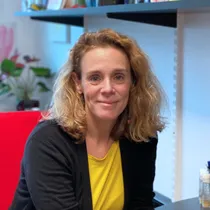- Accueil >
- Publications >
- An endogenous retroviral element co-opts an upstream regulatory sequence to achieve somatic expression and mobility
An endogenous retroviral element co-opts an upstream regulatory sequence to achieve somatic expression and mobility
Auteurs
Natalia Rubanova, Darshika Singh, Louis Barolle, Fabienne Chalvet, Sophie Netter, Mickaël Poidevin, Nicolas Servant, Allison J Bardin, Katarzyna Siudeja
Résumé
Abstract
Retrotransposons, multi-copy sequences that propagate via copy-and-paste mechanisms, occupy large portions of eukaryotic genomes. A great majority of their manifold copies remain silenced in somatic cells; nevertheless, some are transcribed, often in a tissue-specific manner, and a small fraction retains its ability to mobilize. While it is well characterized that retrotransposon sequences may provide cis-regulatory elements for neighboring genes, how their own expression and mobility are achieved is not well understood. Here, using long-read DNA sequencing, we characterize somatic retrotransposition in the Drosophila intestine. We show that retroelement mobility does not change significantly upon aging and is limited to very few active sub-families. Importantly, we identify a donor locus of an endogenous LTR (long terminal repeat) retroviral element rover, active in the intestinal tissue. We reveal that gut activity of the rover donor copy depends on its genomic environment. Without affecting local gene expression, the copy co-opts its upstream genomic sequence, rich in transcription factor binding sites, for somatic expression. Further, we show that escargot, a snail-type transcription factor, can drive transcriptional activity of the active rover copy. These data provide new insights into how locus-specific features allow active retrotransposons to produce functional transcripts and mobilize in a somatic lineage.
Equipes



